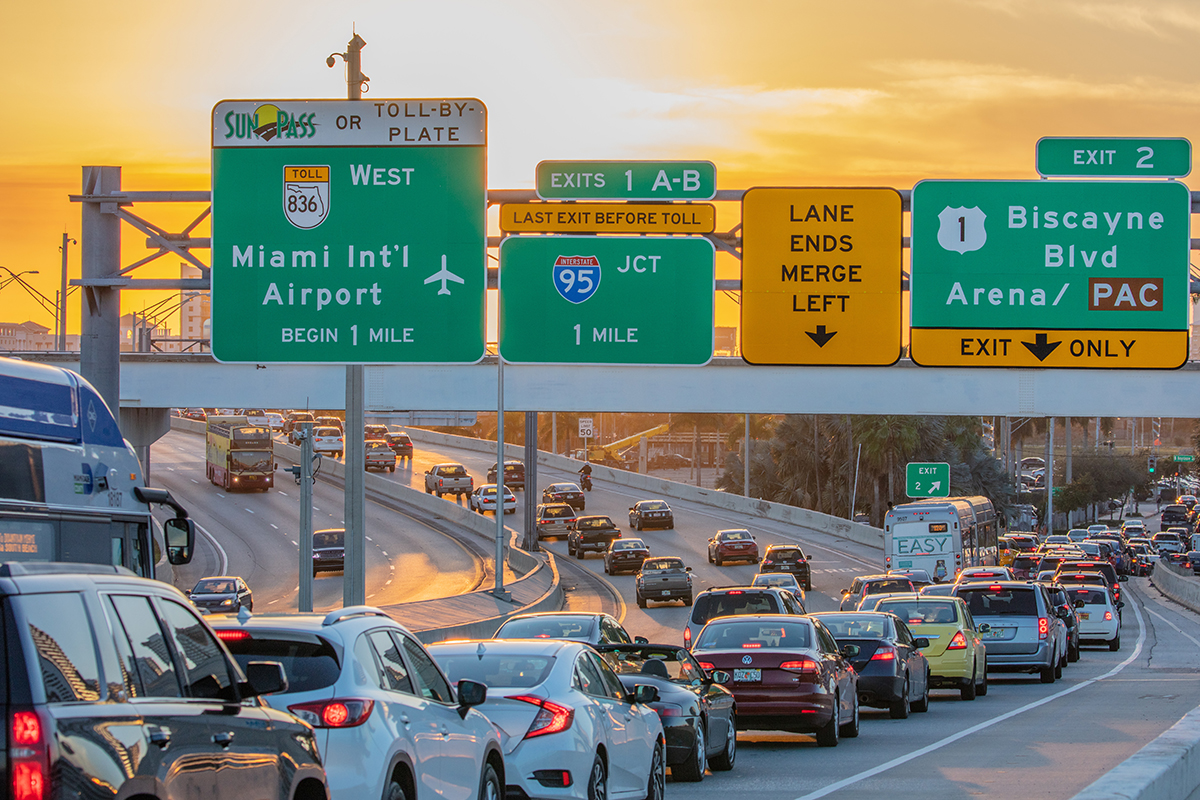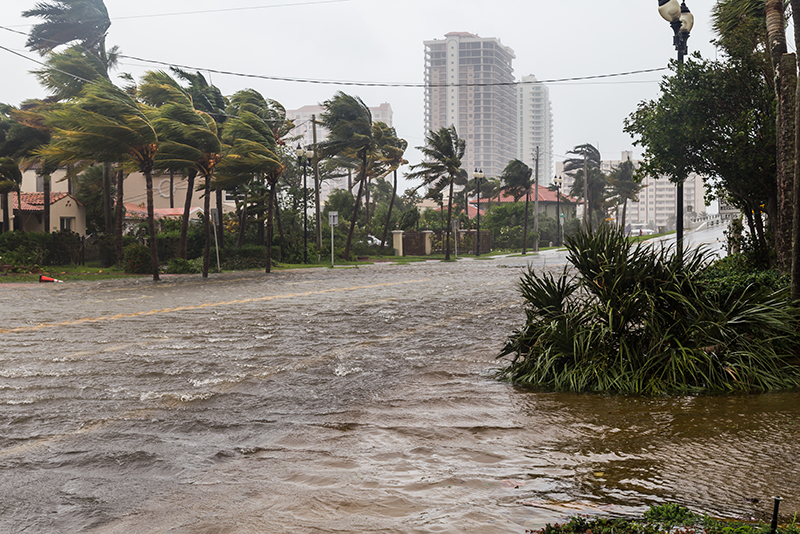Florida’s highways are packed and unpredictable, where every trip can turn into a close call. A traffic incident happens about every 44 seconds across the state. That sounds wild at first, but the real shock is that the biggest threat isn’t just the sheer number of crashes. It’s how quickly distracted driving, sudden weather, and shifting city traffic are changing the risks for everyone behind the wheel.
1: Overview of Florida Car Accident Statistics 2025
Florida’s roadways present a complex and challenging landscape for driver safety, with car accidents representing a significant public health concern. In 2025, the state continues to grapple with unique traffic dynamics that significantly impact motorist risks. Understanding these statistical trends becomes crucial for both individual awareness and broader safety strategies.
According to Florida Highway Safety and Motor Vehicles, the state experiences a traffic incident approximately every 44 seconds, highlighting the urgent need for comprehensive safety measures. This frequency underscores the importance of proactive driver education and legal protection.
Key characteristics of Florida’s car accident landscape in 2025 include:
- High urban accident rates in metropolitan areas like Miami, Orlando, and Tampa
- Increased incidents involving distracted driving, particularly among younger demographics
- Significant impact of environmental factors such as sudden weather changes
The statistical profile reveals several critical insights. Distracted driving remains a primary contributor to accidents, with nearly 300 fatal incidents attributed to this behavior in recent years. Moreover, hit-and-run crashes continue to pose substantial challenges, with over 100,000 such incidents recorded annually.
For individuals seeking more comprehensive understanding, our Plantation car accident lawyers can help provide deeper insights into legal protections and rights for accident victims. Understanding these statistics is not just about numbers, but about recognizing the real human impact behind each data point.

2: Trends in Car Accident Rates Over the Years
Florida’s car accident landscape has undergone significant transformations over recent years, revealing complex patterns that demand careful examination. The state’s traffic dynamics continue to evolve, presenting challenges and opportunities for improved road safety.
According to National Highway Traffic Safety Administration, national traffic fatality trends provide crucial context for understanding Florida’s specific situation. Between 2020 and 2022, the United States experienced fluctuating accident rates, with fatal crashes peaking at 39,785 in 2021 before experiencing a slight decline.
Key observations in Florida’s accident trends include:
- Consistent increase in hit-and-run incidents, averaging over 103,000 annually
- Growing concern around distracted driving, particularly among younger demographics
- Gradual shifts in urban traffic patterns post-pandemic
Urban centers like Miami, Orlando, and Tampa continue to be hotspots for traffic incidents, reflecting the complex interplay of population density, infrastructure, and driver behavior. The rising prevalence of technology and changing work patterns have significantly influenced these trends.
Interestingly, while overall accident rates show nuanced changes, certain categories demonstrate more pronounced shifts. Explore our comprehensive car accident statistics guide for deeper insights into these evolving patterns.
The data underscores the critical need for continuous road safety education, improved infrastructure, and proactive legal support for accident victims. Understanding these trends is not just about numbers, but about protecting lives and promoting safer communities.
3: Common Causes of Car Accidents in Florida 2025
Florida’s roadways present a complex tapestry of risk factors that contribute to motor vehicle accidents, with multiple interconnected elements creating dangerous driving conditions. Understanding these common causes becomes critical for developing effective prevention strategies and protecting public safety.
According to Florida Highway Safety and Motor Vehicles, distracted driving remains a significant contributor to traffic incidents. In 2024, nearly 300 fatalities and over 2,200 serious bodily injuries were directly linked to driver distraction, underscoring the urgent need for heightened awareness.
Primary causes of car accidents in Florida in 2025 include:
- Technological distractions such as smartphone use while driving
- Impaired driving from alcohol, drugs, and medication
- Aggressive driving behaviors and excessive speeding
- Fatigue and drowsy driving, particularly among long-distance commuters
Impaired driving continues to pose a substantial risk, with one in three fatal traffic crashes attributed to drivers operating vehicles under the influence. The demographic most frequently involved includes young adults aged 21-35, highlighting the need for targeted educational interventions.
Our car accident lawyers can provide additional insights into protecting yourself and understanding legal recourse following an accident. Environmental factors such as sudden weather changes, poorly maintained roads, and complex urban traffic patterns further compound these risks, creating a multifaceted challenge for road safety in Florida.
4: The Impact of Weather on Florida Car Accidents
Florida’s unique climate presents extraordinary challenges for motorists, creating a complex environment where weather conditions significantly influence traffic safety. The state’s distinctive meteorological patterns demand heightened awareness and adaptive driving strategies.
According to Florida Highway Safety and Motor Vehicles, sudden weather changes can dramatically increase accident risks. Florida’s tropical and subtropical climate introduces several critical weather-related hazards that directly impact driving conditions.
Key weather-related accident risk factors include:
- Intense and rapid afternoon thunderstorms
- Hurricane season creating unpredictable road conditions
- Sudden torrential rainfall reducing visibility
- Flooding in low-lying metropolitan areas
Tropical storms and hurricanes pose particularly significant challenges, frequently creating treacherous driving environments with high winds, heavy precipitation, and unexpected road obstructions. Urban areas like Miami, Orlando, and Tampa experience heightened risks during these meteorological events.
Learn more about navigating challenging driving conditions with our expert guidance. Drivers must remain vigilant, reduce speed during adverse weather, maintain proper vehicle maintenance, and understand the critical importance of adapting driving techniques to environmental conditions. Recognizing these weather-related risks is essential for preventing potential accidents and ensuring personal safety on Florida’s roadways.

5: Demographics: Who is Most Affected by Accidents?
Florida’s traffic accident landscape reveals complex demographic patterns, with certain populations experiencing disproportionately higher risks on the state’s roadways. Understanding these nuanced statistical trends becomes crucial for targeted safety interventions and prevention strategies.
According to Florida Highway Safety and Motor Vehicles, specific demographic groups demonstrate heightened vulnerability in traffic incidents. The data indicates a multifaceted risk profile that extends beyond traditional assumptions about accident-prone populations.
Demographic groups most significantly impacted include:
- Young adult drivers aged 21-35
- Male drivers under 40
- Motorcycle and bicycle operators
- Residents in urban metropolitan areas
Vulnerable road users face particularly acute risks. In 2022, pedestrians and bicyclists experienced substantial challenges, with over 10,000 pedestrian crashes resulting in 765 fatalities and 7,129 bicycle-related incidents causing 211 deaths. These statistics underscore the critical need for enhanced road safety measures and targeted educational initiatives.
Explore our comprehensive guide on personal injury accident causes to understand the deeper context of these demographic trends. The data reveals that location, age, gender, and mode of transportation significantly influence accident likelihood, emphasizing the importance of individualized awareness and proactive safety strategies.
6: Regional Differences in Car Accident Statistics
Florida’s vast and diverse landscape presents significant variations in traffic accident patterns across different metropolitan and rural regions. Understanding these nuanced geographical differences becomes crucial for developing targeted safety interventions and prevention strategies.
According to Florida Department of Highway Safety and Motor Vehicles, regional accident statistics reveal stark contrasts in traffic incident frequencies and characteristics. The data demonstrates that accident risks are not uniformly distributed across the state.
Key regional variations include:
- Higher accident rates in dense urban areas like Miami, Orlando, and Tampa
- Increased hit-and-run incidents in metropolitan regions
- Significant differences in accident severity between coastal and inland counties
- Variations in pedestrian and bicycle-related accidents across different municipalities
South Florida consistently demonstrates the most complex traffic safety landscape, with Miami-Dade County experiencing substantially higher accident rates compared to more rural northern regions. The concentration of population, complex road infrastructure, and diverse driving demographics contribute to these regional disparities.
7: Legal Outcomes for Victims in Florida Car Accidents
Florida’s legal landscape for car accident victims presents a complex and challenging environment where understanding one’s rights becomes paramount to securing fair compensation. The state’s unique no-fault insurance system and comparative negligence laws significantly influence legal outcomes for those involved in traffic incidents.
According to Florida Highway Safety and Motor Vehicles, legal challenges are particularly pronounced in hit-and-run cases, which represented 271 fatalities and 871 serious bodily injuries in 2023. These statistics underscore the critical importance of legal representation and understanding victim rights.
Key legal considerations for accident victims include:
- Navigating Florida’s no-fault insurance requirements
- Understanding comparative negligence statutes
- Documenting medical expenses and lost wages
- Identifying potential multiple liability sources
Vulnerable road users face additional legal complexities, with pedestrians and bicyclists experiencing unique challenges in pursuing compensation. The legal system recognizes the heightened risks faced by these groups, often providing specialized protection and recovery mechanisms.
Explore the importance of experienced legal representation to understand how professional guidance can transform your legal journey. Successful legal outcomes depend on thorough documentation, timely action, and strategic legal approach, emphasizing the critical role of specialized legal support in navigating Florida’s intricate accident compensation landscape.

8: Steps to Take After Being in a Car Accident
A car accident can be a disorienting and stressful experience, demanding quick and strategic actions to protect your legal rights and personal well-being. Understanding the proper protocol can significantly impact your potential compensation and future legal proceedings.
According to Florida Highway Safety and Motor Vehicles, drivers have specific legal obligations following a traffic incident. The state mandates immediate reporting of accidents involving injury, death, or property damage exceeding $500.
Critical steps to take immediately after an accident include:
- Ensure personal safety and move to a secure location
- Call local law enforcement to file an official report
- Exchange insurance and contact information with other involved parties
- Document the accident scene through photographs and detailed notes
Medical documentation becomes crucial in establishing potential legal claims. Even if injuries seem minor, seeking professional medical evaluation can provide critical evidence for future compensation claims. Injuries may not be immediately apparent, and prompt medical attention protects both your health and potential legal interests.
Learn how to effectively document accident scene damage to strengthen your potential legal case. Professional documentation can make a substantial difference in insurance negotiations and potential legal proceedings, ensuring you have comprehensive evidence to support your claim.
The table below provides a comprehensive summary of the most important Florida car accident statistics, trends, causes, regional insights, and recommended actions found in the article.
| Key Area | Main Insights/Statistics | Notable Takeaways or Actions |
|---|---|---|
| Accident Frequency | A car accident occurs every 44 seconds in Florida. | Highlights need for constant awareness and safety. |
| Accident Trends | Hit-and-run incidents average 103,000+ annually; urban areas like Miami, Orlando, and Tampa see highest rates. | Urban planning and targeted interventions needed. |
| Causes of Accidents | Top causes: distracted driving (300+ fatalities), impaired driving (1 in 3 fatal crashes), speeding, fatigue. | Education on distraction and impairment is critical. |
| Weather Impact | Thunderstorms, hurricanes, and sudden rain dramatically increase accident risks, especially in urban, low-lying areas. | Drivers should adjust practices during bad weather. |
| Demographic Insights | Young adults (21-35), males under 40, pedestrians, bicyclists, and urban residents are most affected by accidents. | Demographic-targeted awareness programs recommended. |
| Regional Differences | Miami-Dade and South Florida have highest accident and hit-and-run rates; rural areas see fewer but sometimes more severe. | Regional data guides local prevention strategies. |
| Legal Outcomes for Victims | No-fault insurance, comparative negligence, documentation, and legal support crucial, especially for pedestrians and cyclists. | Professional guidance enhances compensation chances. |
| Immediate Steps After Accident | Ensure safety, call law enforcement, exchange info, document the scene, and seek medical attention. | Proper steps support medical recovery and legal claims. |
Turn Florida Car Accident Risks Into a Path Toward Justice
If reading the latest Florida car accident statistics has left you feeling overwhelmed by the daily risks on the road, you are not alone. Many drivers in Florida face uncertainty about what comes next after an accident, especially with complex issues like hit-and-runs, distracted driving, and challenging weather conditions. These real dangers affect the safety and financial stability of families across the state. When you are worried about your rights, medical costs, or how to recover after a crash, understanding your legal options is crucial.
Let Goldberg & Loren guide you from uncertainty to action. With over 120 years of combined experience, our team has helped accident victims get the compensation they deserve. We can help you document your damages, navigate confusing insurance rules, and fight for maximum compensation.
The sooner you reach out, the faster we can work to protect your health and your future. Connect now for a free consultation and see how our results-driven approach can help.
Frequently Asked Questions
What are the most common causes of car accidents in Florida in 2025?
The primary causes of car accidents in Florida include distracted driving, impaired driving due to alcohol or drugs, aggressive driving behaviors, and fatigue, particularly among long-distance commuters.
How frequently do car accidents occur in Florida?
In Florida, a traffic incident occurs approximately every 44 seconds, highlighting the ongoing need for improved road safety measures and driver awareness.
What impact does weather have on car accidents in Florida?
Weather can significantly influence car accidents in Florida, particularly during intense thunderstorms, hurricanes, and sudden rainfall, which reduce visibility and create hazardous driving conditions.
What steps should you take immediately after being in a car accident?
After an accident, it is crucial to ensure personal safety, call local law enforcement for an official report, exchange information with other parties involved, and document the scene through photographs and notes.

